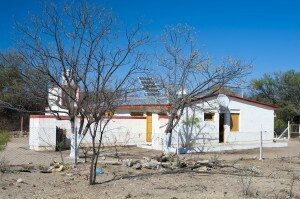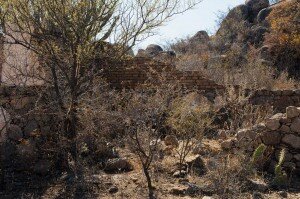August 29th – 30th 2011

Approximately 150 km from the bustling city of Cordoba, surrounded by dusty, rural hills, lies the small town of Soto where we made our base for two days. The terrain in the region is rugged, with desert-like conditions. Here, families travel mostly by foot, horseback, or motorcycle on dirt roads. The team made its first distribution of solar lights to the students who attend the Ricardo Rojas Elementary School, which is 15 km from Soto.
Even after leaving Buenos Aires at the crack of dawn, it was afternoon by the time we made it to the school. Freshly whitewashed for our arrival, the school consisted of a small brick building enclosed with a small yard. As one enters the compound, an old ground water well that is no longer functional is on the left side and a platform, with the Argentinean flag on a post, sits on the right. The building is surrounded by brush and dirt; there is no access to water or electricity. The school was recently setup with a solar panel for lighting, through a government initiative to take solar to rural areas that are off the grid. Water is brought to the building once a week by tanker truck and stored in a permanent water-tank, behind the building.

A dozen kids, a few family members, and representatives from APAER were there to greet us. The visit began with quick introductions and an explanation of why we were there. The school principal welcomed us and introduced the project. This was followed by an explanation from Clara, a brief introduction by Energizer, and One Million Lights. The children and the families were very shy at first but slowly warmed up with all the attention. Bubble wrap and some casual soccer were key to breaking the ice with the children. The rest of the afternoon we took pictures, made the video, and interviewed the families. We returned to Soto for a snack and then went back to the school so that we could take more pictures/video and interviews in the dark. At the end of the day, the families walked home with a solar light in hand. It was heartwarming to see the families walk away with a light, making their way back to their homes.
The next day we returned to the school for more pictures and video footage. , Also, for feedback, we were able to interview several families that had taken a solar light home the previous night.

